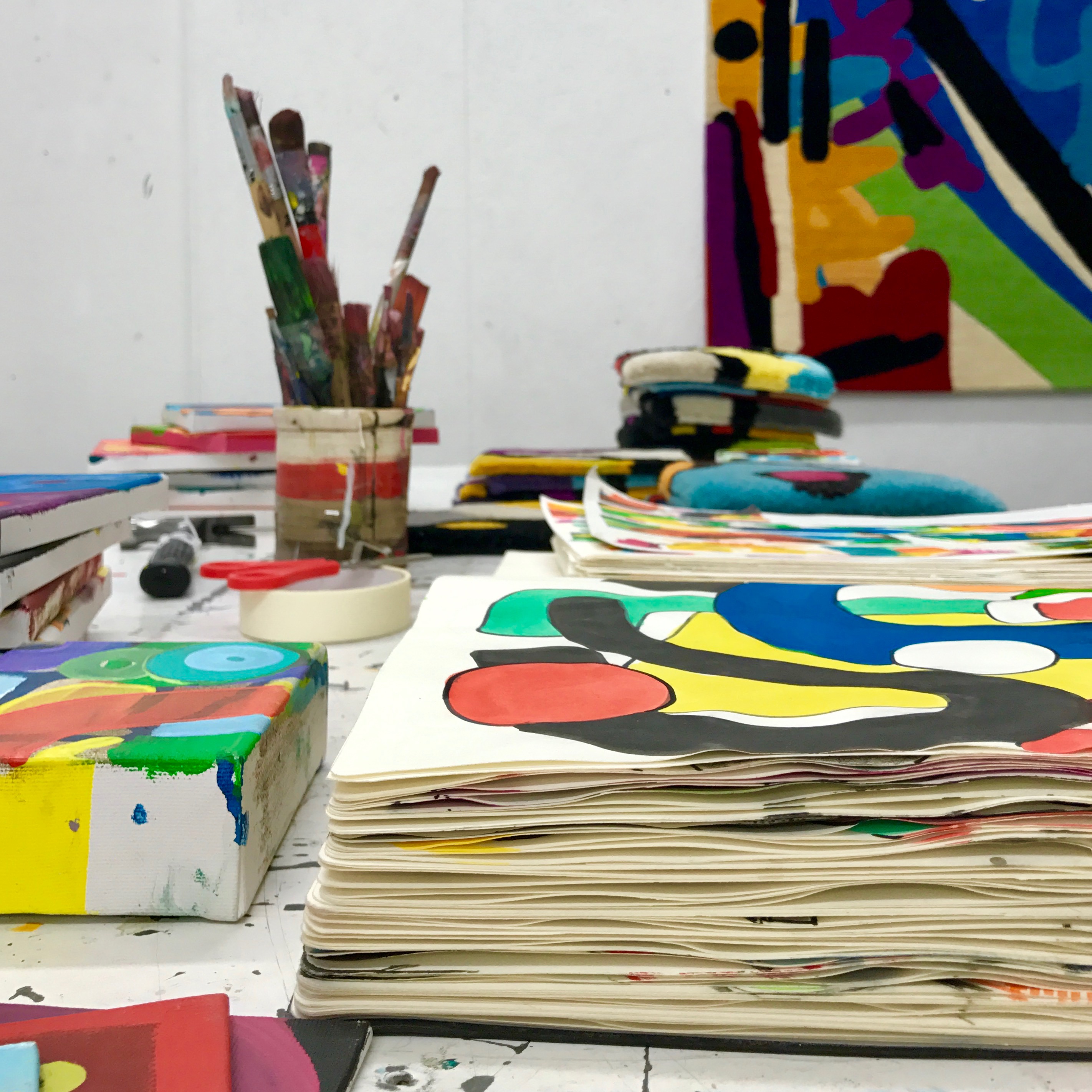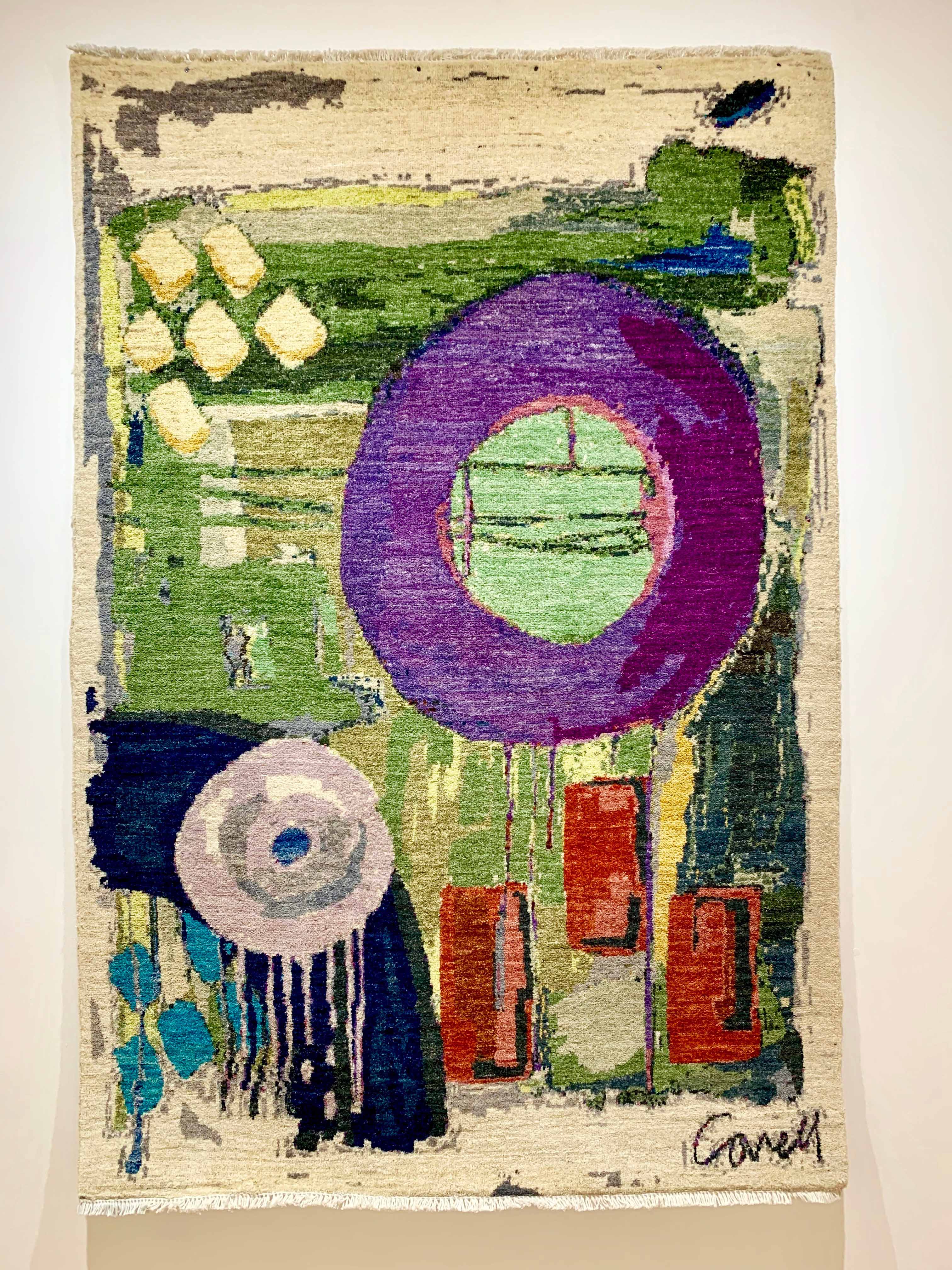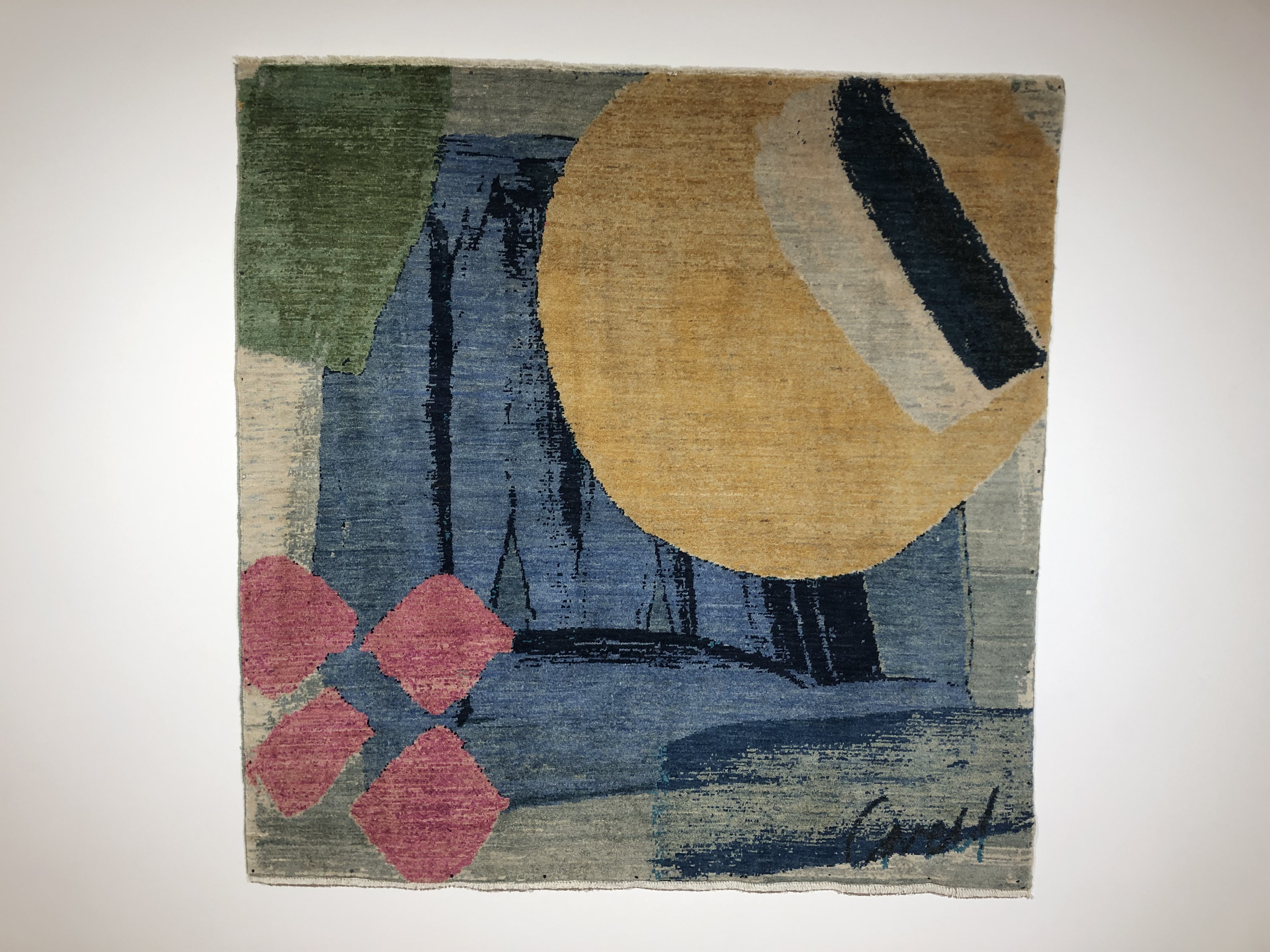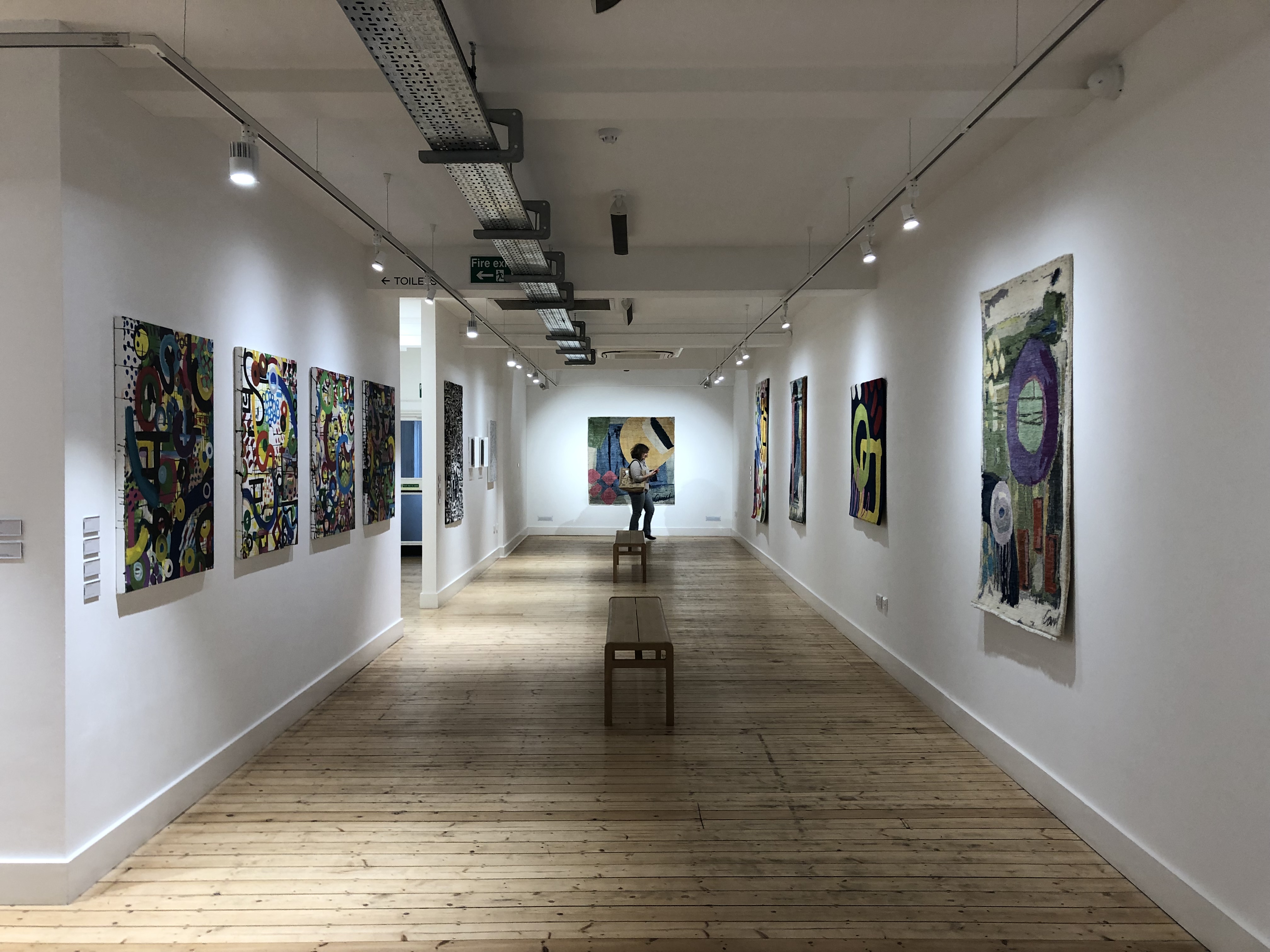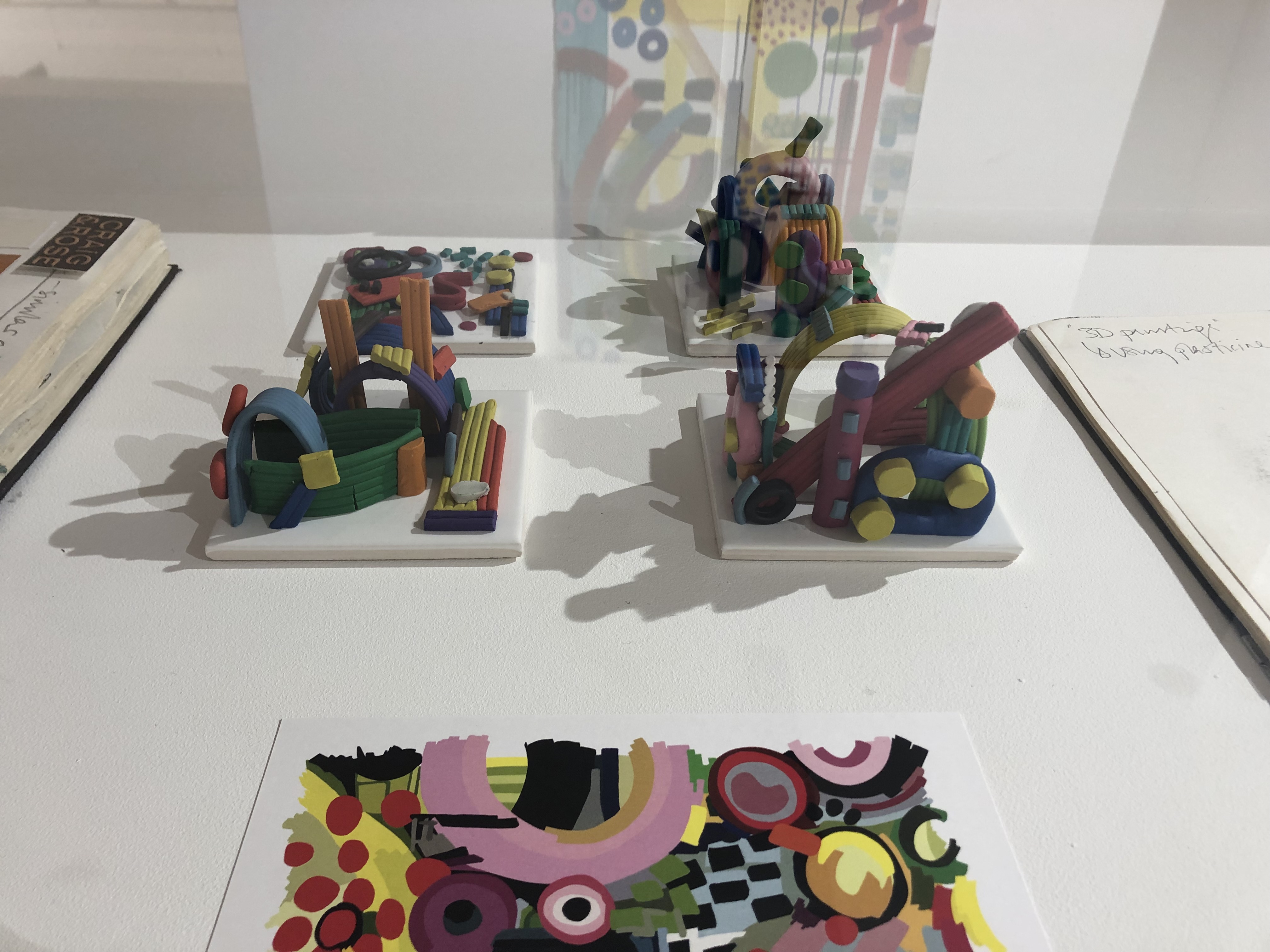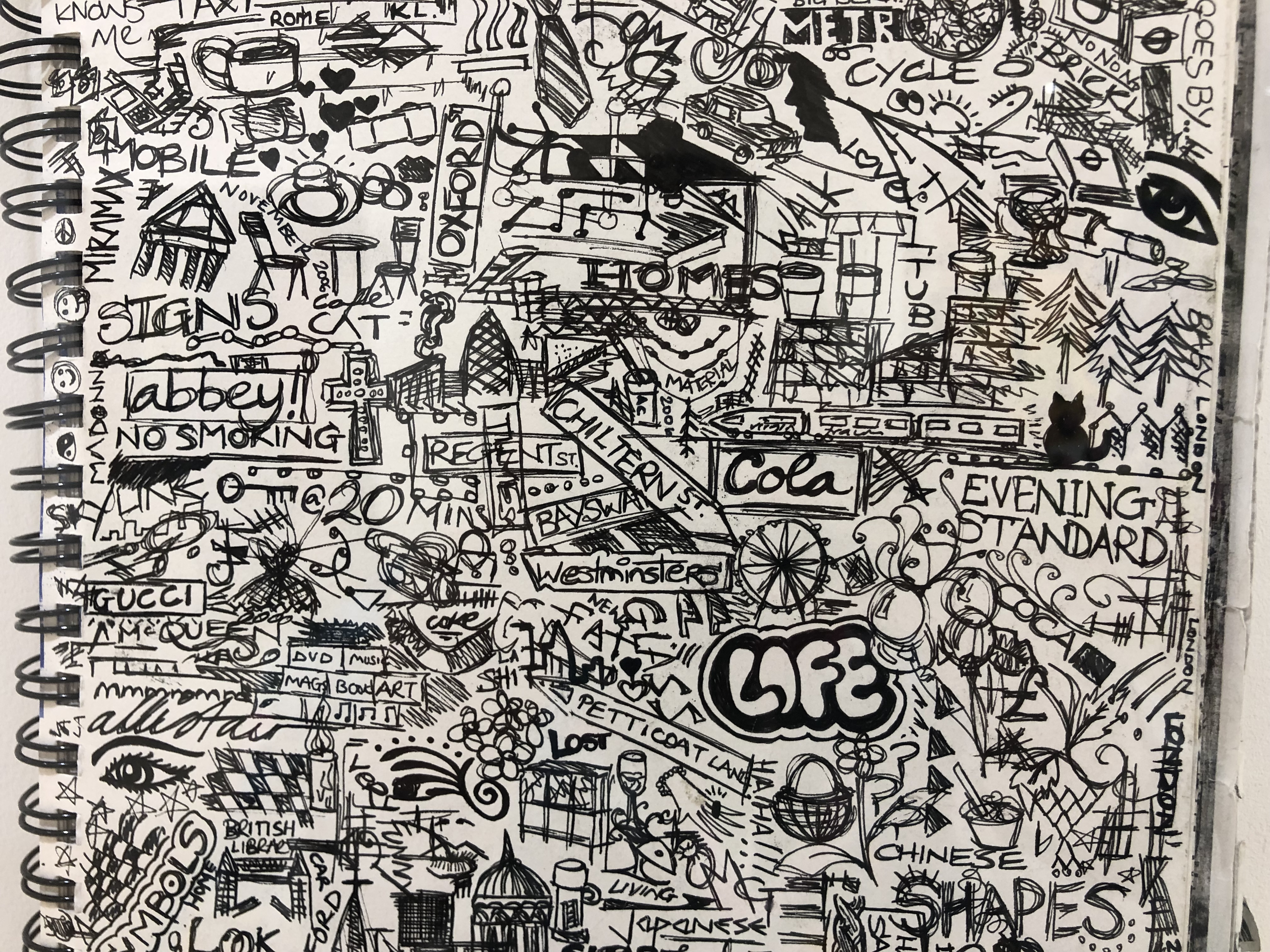A few weeks ago, I was lucky enough to bump into Allistair Covell while visiting his “Canvas to Carpet” exhibition at The Broadway Gallery in Letchworth. I nearly missed the exhibition entirely. Is it just me or are you far more likely to miss things on your doorstep than miles and miles away? Either way, having chatted to Allistair, I was excited to share his rug designs and hear more about his fascinating creative process. Here’s our Q&A and a beautiful selection of his artwork and rugs for you…
Allistair Covell – welcome! Can you start by telling us a little bit about yourself?
Thank you. I’m an artist and I currently have a studio with the Digswell Arts Trust based in Hertfordshire. My practice is an exploration of colour and pattern on a surface, inspired by my synaesthesic* responses to music and sound. Some of my paintings, whether on canvas or drawn using an iPad, are translated into one-off, hand-knotted carpets made in Afghanistan or Nepal by expert weavers.
*Synaesthesia is a neurological phenomenon, a condition best described as ‘a union of the senses’ where one sensory experience prompts another and for me it is the relationship between sound and colour, but others can experience a taste when seeing colour or hearing a sound.
Can you tell us about your creative process?
I’ve had a strong connection between sound and colour for as long as I can remember and music is more than just an audio experience for me: it’s an ever changing audio and visual landscape, which I attempt to record and draw on a surface.
The marks I make try to capture the spontaneity and abstract fluidity of music and hopefully this shows in the rhythmic brush marks, splashes of colour and the varying shapes and symbols. Each mark represents a different instrument or song melody, lyric or tone of the person’s voice. Sometimes my paintings are also visual depictions of places and people or an event, invariably linked to a moment where music played a fundamental role.
What initially inspired you to move from traditional paintings to woven ones?
In 2013 I saw an opportunity in COVER magazine inviting artists to ‘design a carpet’ and the winning designs would be made into hand-knotted carpets in Afghanistan. I wanted to work at a larger scale but I didn’t have a studio at the time so I thought a carpet might be the way forward. I didn’t know much about hand-knotted carpets so I naively submitted an incredibly complex painting!
To my surprise my submission, “The City”, was accepted and nominated for an international Carpet Design Award and in January 2014 I won the Best Young Designer Award at the 9th Carpet Design Awards, held at Domotex Hannover in Germany, the world’s leading trade fair for carpets and floor coverings. Winning such a prestigious accolade encouraged me to research this area of textiles and slightly refocus my practice to include translating some of my artworks into hand-knotted carpets.
I see my work as the transference of something functional, like the carpet, into a fine art object, whether the carpet is placed on the floor or hung on a wall.
You use the term “carpet” instead of “rug”. Why is that?
I think I tend to use the term ‘carpet’ as opposed to ‘rug’ because I was introduced to them as ‘carpets’ and that name has stuck. It is an interesting question as both a ‘carpet’ and a ‘rug’ is one and the same, although in Britain carpets are usually called rugs as we have fitted carpets and that might be a bit too confusing having ‘a carpet on top of a carpet’.
Since learning more about the industry, the more artistic or painterly looking carpets and rugs are sometimes referred to as ‘art carpets’ or fall under the category of ‘rug art’. In some parts of the world handmade carpets are seen as works of art as well as functional objects, which is a vision I share, and coming from a fine art background, I have always seen the carpets as a work of art. I’ve read that some oriental carpets have reached the heights of artistic expression and are held in the same regard in the East as oil paintings are in the West.
Interestingly, over the last year I have started to refer to the carpets as ‘woven paintings’. The term ‘woven paintings’ grew out of a conversation during the planning stages of my exhibition Canvas To Carpet at the Broadway Gallery in Letchworth Garden City, with the show’s curator Laura Dennis. Laura felt that the term ‘woven paintings’ was a more apt description of the carpets as they are the woven interpretations of my paintings.
Do you have a favourite piece from your “Canvas to Carpet” exhibition and, if so, why?
That’s a hard question to answer as I probably have more than one favourite but if I had to choose: it’s probably Jane’s Dream. Inspired by the short instrumental song “Jane’s Dream” by the American singer Janelle Monáe from her album Dirty Computer (it lasts just 19 seconds) this carpet is unique as it is an interpretation of an iPad painting and I wanted to see how the blockier brush marks and vibrant colours would be translated into a carpet by the weavers in Afghanistan.
It’s a favourite because out of all of the carpets in the exhibition this is the one that I feel was the riskiest to have translated as I didn’t know if it would work visually, sometimes a painting works only as a painting not as a carpet. The composition of “Jane’s Dream” is quite odd in terms of a hand-knotted carpet, with the asymmetrical abstract shapes, bold brush marks and clashing colours. It could have failed but I don’t think it did as when hanging on the wall in the exhibition, with the addition of my signature woven in the bottom right corner, it looked like a large-scale painting from a distance – and that is the effect that I wanted.
Can you tell us more about the fabrics used in your carpets?
Unlike a rag rug, which can be made from small strips of fabric, hand-knotted carpets are made from wool and woven on a loom, with the wool strands being knotted by hand.
Looking at the carpet production in Afghanistan, some carpets are made using the wool of the Karakul or Ghazni sheep. These sheep have a dual fleece with a long outer and a softer inner layer which, when blended together, creates a lustrous wool that is hard wearing but soft to touch. The wool is spun and twisted into yarns and dyed with natural materials such as tree roots, walnut skins and pomegranates or wood and minerals. Interestingly, because of the twist, there is a lack of colour uniformity. The process is known as ‘abraj’ and rather than be seen as an imperfection it is viewed as adding to the beauty of the finished product. I really like this technique as it gives the carpet it’s painterly effect, reminding me of how a brush mark looks on the canvas or as paint drips and bleeds into another colour.
How was your experience of working with weavers in Afghanistan and Nepal? How did you ensure the carpet was to your specification?
It’s been a wonderful experience working directly with the weavers in Afghanistan, with the support of the organisation Turquoise Mountain, and with the UK based team at Rug Maker who work with their weavers in Nepal.
Turquoise Mountain is a charity organisation that was launched in 2006 by HRH the Prince of Wales and Rug Maker is best known for creating the British Stamp series of rugs in collaboration with the Royal Mail.
Creating the carpets is an interesting and rewarding process. The images of the paintings I send to the weavers are converted into carpet graphs (known as cartoons) and from this the colours are decided and the wool is then dyed, either from an existing colour palette or created new.
I see the process as a true collaboration between two sets of artisans: the weavers and myself. I trust their instincts when it comes to interpreting the designs, the dying of the wool and the production process. I don’t usually see a picture of the finished carpet until it has been made, unless I’ve been sent a few mid-production photographs, so it is always exciting to see what the final carpet will look like.
Coming from an art and textiles background (I hold degrees in both Fashion & Textiles Design from the University of Bedfordshire and Surface Textile Design from the University of the Arts London), working with carpets as a creative medium feels like a natural progression for me.
Are there any artists or designers whose work you love or are inspired by?
I tend not to focus in on individual artists but look more to the wider art movements. I really like the work of artists who were part of movements such as abstract expressionism, fauvism and cubism but also Pop Art. I draw a lot of my inspiration from music as my paintings represent the colours and shapes I see when I hear it.
I’m inspired by the music of Kate Bush, Madonna and Enya, amongst others, but also the scores of films and computer games. One series of paintings is based exclusively on the musical theme of the original Thunderbirds TV show from the 1960s! I don’t think I’ve ever come across a genre of music I’m not keen on as I always seem to feel some sort of connection to it.
What’s up next for you?
I have been invited by Turquoise Mountain to show a selection of carpets during the HALI Fair at the Mall Galleries in London from 27 – 30 June 2019.
The carpets going on display were handmade in Afghanistan with the support of Turquoise Mountain and as the presentation is taking place after my exhibition, I am referring to it as Canvas To Carpet: The Afghan Edit. The HALI Fair is one of the major events during HALI London, which is the first London festival devoted to the art and history of textiles. The HALI Fair will host twenty of the best international carpet galleries and dealers, offering a wide range of vintage and antique textile art, from important collectors’ pieces to more affordable decorative objects.
Part of London Art Week, HALI London is a celebration of the 200th edition and 40 years of HALI magazine, the leading publication in the world of antique carpets, textiles and Islamic art. HALI London includes a programme of specialist lectures and events taking place at venues including the V&A, The National Gallery and Masterpiece London. HALI London runs from 24 – 30 June 2019.
What advice would you give to someone starting out who wants to get into the industry?
In my experience I have noticed that everyone’s journey getting into the art or design industry is different and especially more so today as there doesn’t seem to be a set, defined path.
There are so many options available but I think self-belief in your own work and yourself is the most important. I think it is crucial to have a deep understanding of your own voice and know what it is that excites you and want you to achieve. I know it’s a bit of a cliché, but try not to be put off by what other people might say and that is easier said than done. I’ve had my fair share of criticism over the years (sometimes it’s felt like I’ve had more of that than praise over the years) but I’ve learnt how to turn the negative comments and remarks into positive actions and push me forward.
I think research is equally important. After winning the award I began to research the carpet design industry. I wanted to know more about this area of textiles as I hadn’t studied it at university. Who were the other designers out there, what did they do? What was considered a good or bad design? What is expected? I did my research and I was patient. I’ve come to realise that my work sits somewhere between the boundaries of fine art, contemporary craft and design, it’s not exclusive to each field and I’m comfortable with that.
So, that was Allistair Covell and his artworks 🙂 If you’d like to be the first to see future Q&As with rag ruggers and textile artists, why not join our Rag Rug Community on Facebook or join our fortnightly newsletter here.
OR CONNECT WITH US ON SOCIAL MEDIA AT:
Instagram: https://www.instagram.com/raggedlife/
Facebook: https://www.facebook.com/raggedliferagrugs/
Pinterest: https://www.pinterest.co.uk/raggedlife/
Twitter: https://twitter.com/raggedlife
As always, happy rag rugging!
Elspeth x
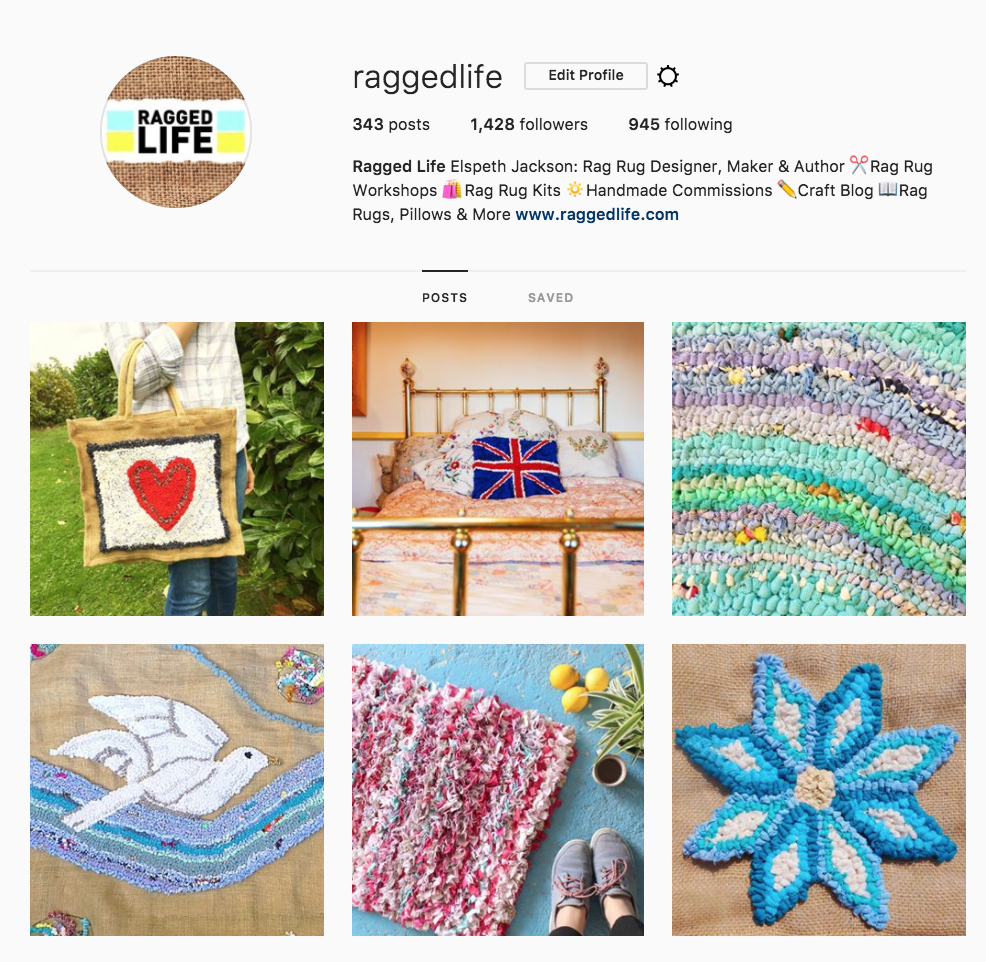
We’ve got lots of beautiful rag rug designs for you to take inspiration from on our social media channels.

